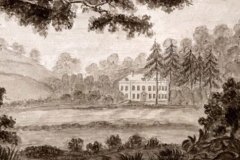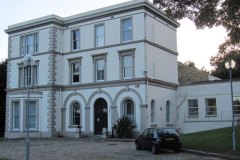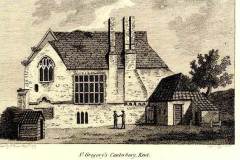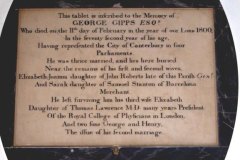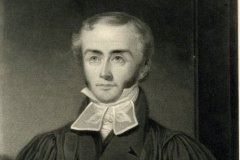(c1729-1800) Apothecary, Hop Broker, Banker & MP
George Gipps is described as a self-made man by The History Of Parliament. He was the son of John or Henry Gipps, a soldier turned stay-maker of Ashford who in 1710 had married Sarah Flint at St Alphege, Canterbury. In 1751 Gipps became an apprentice to apothecary Charles Knowler of Canterbury but it was his first marriage and hop broking that made his fortune.
He married three times.
1. in 1755, Elizabeth Johanna Roberts, heiress of John Roberts of Harbledown; she died in 1775.
2. in 1780, Sarah Stanton daughter of William Stanton, a Spanish merchant. They had two sons, George (1784-1869) and Henry (1786-1832); Sarah died in 1789.
3. in 1792, Elizabeth Lawrence daughter of Dr Thomas Lawrence a friend of Samuel Johnson; she died in 1814, aged 65.
- Gipps’ first marriage brought him the lease of Hall Place, Harbledown [Images 1,2]. He also lived at 11 St Margaret’s Street, Canterbury, which later became part of Slatter’s Hotel and was destroyed in an air raid in 1942
- He joined his nephew Henry Gipps (1757-1812) and James Simmons (1741-1807) in the Canterbury Bank (now part of Lloyds Bank) based in St Margaret’s Street.
- He was an alderman of Canterbury and in 1773 briefly mayor, after John Taddy died in office.
- He was one of Canterbury’s two MPs from 1780 to his death, although he was defeated in 1796 and again in 1797 when that election was ordered to be rerun. He was then reinstated after a petition to disqualify his opponents. In Parliament he seems not to have been attached to any party although he mainly supported the Pitt government. The Gentleman’s Magazine said he was “unalterably attached to the King and Constitution”.
- As well as Hall Place, his property included the lordship of Thannington; Newhouse, Thannington; and the Isle of Elmley, Sheppey.
- He also owned St Gregory’s Priory opposite St John’s Hospital in Northgate, Canterbury, [Image 3]. He first leased the priory in 1773 from Archbishop Frederick Cornwallis and then bought it from Archbishop John Moore. The priory had been dissolved under Henry VIII and it still included the Canterbury parsonages of St Dunstan’s, Westgate and Northgate plus many other parsonages and tithes elsewhere in Kent. It was valued in Gipps’ time at a gross £1,117-16s-8d per year.
- Gipps died at Hall Place in February 1800 and was buried in St Michael’s Harbledown where there is a memorial to him on the south wall of the nave [Image 4].
- His son George lived at Howletts near Bekesbourne to the east of Canterbury, which remained in the Gipps family into the 20th century. Thanks to connections of his stepmother he was MP for Ripon, Yorkshire, from 1807-26.
- His other son Henry [Image 5] was vicar of St Peter’s, Hereford, and other livings. Novelist Jane Austen in 1813 thought him “rather a good-looking little man”.
- Henry’s son, Henry Plumptre Gipps (1813-59), a barrister, was elected MP for Canterbury in 1852, although the following year he was unseated on petition amid allegations of bribery.
Sources: Hasted (1800); Gentleman’s Magazine 1800 page190; also web site History of Parliament
JPD

